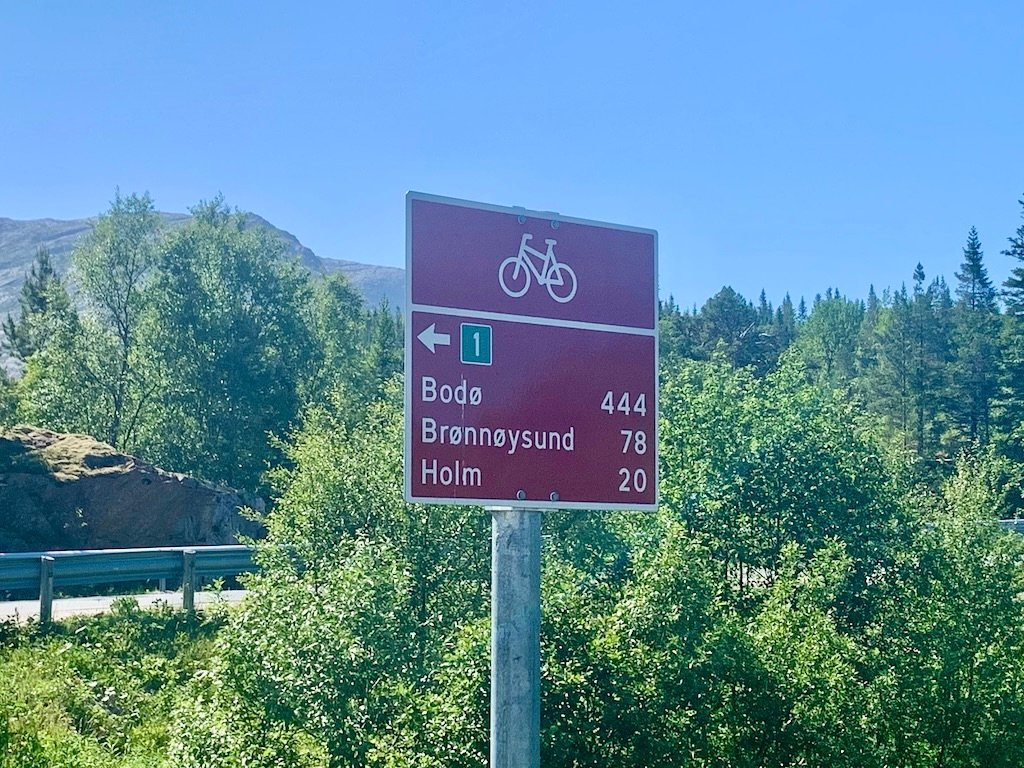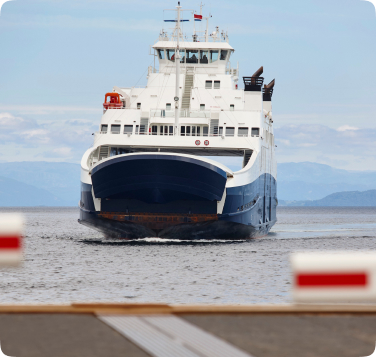
De som begir seg ut på den norske delen av Nasjonal sykkelrute 1 - Kystruta, følger i fotsporene til utallige andre eventyrsyklister. I flere tiår har syklister fra hele verden syklet til toppen av Europa. Vi har brutt den lange reise inn i fem etapper. Hver etappe er spesiell og unik. De flateste strekningene er etappe 2 og 3. De mest utfordrende etappene er etappe 4 og 5 i Arktis, mens etappe 1 byr på noe for enhver smak. Hvis du planlegger å sykle bare én etappe, kan du ha en vanskelig tid velge riktig rute. Vår grundige gjennomgang av hvert trinn vil forhåpentligvis hjelpe deg med din beslutninger.

Den norske Atlanterhavskysten er kanskje den vakreste på kloden. Det er ingen ende på naturens skjønnhet når du sykler opp eller ned langs den. Men som vi vet, er naturen i fin balanse, og du kan ikke ha all denne skjønnheten uten litt smerte. Alle jeg kjenner som har syklet hele denne reisen, har opplevd minst én, eller sannsynligvis flere, dager med vanskelig vær der en blanding av motvind, kraftig regn og kalde temperaturer gjør hver kilometer til en skikkelig kamp. Slike dager kan man selvsagt sitte over, men for mange er det ikke noe alternativ å vente hver gang været blir dårlig.
Å oppleve ustabilt vær er en del av naturen på vestkysten av Norge. Det er en hedersbetegnelse for den uredde syklist. Jeg angrer ikke på noen av de tøffe dagene jeg har opplevd på veien. Når solen kommer tilbake, er det som en ny begynnelse, og du vil sette pris på hver eneste fugl som synger, hver eneste innsjø som glitrer og hver eneste klare fjelltopp i horisonten. Det er først når noe er borte at du virkelig setter pris på at det kommer tilbake. Hvis du kan starte reisen med den innstillingen at naturen er herren, og at vi bare er dens tjenere. Du vil finne ro på de mest vindfulle og våte dagene, og bli euforisk på de solfylte.

Hvis du ikke har et stramt tidsskjema, er det mange avstikkere å vurdere. De færreste kjenner til de utrolige veiene til Hoddevik eller Vestkapp mellom Bergen og Ålesund. Verdensarvøya Vega rett sør for polarsirkelen eller den billedskjønne øya Rødøy har en av de beste utsikten over Atlanterhavskysten. I Lofoten finnes det små sideveier som ingen tar, og over Tromsø ligger et uoppdaget underverk i nord som kan nås med lokale og til tider ukjente ferger. Det har tatt mange år med forskning og utforsking å bli kjent med disse områdene, og i medlemsområdet får du vite hva, hvor, hvorfor og hvordan du kan krydre din episke reise.

Jeg har en vits om at det ikke finnes flate veier i Norge, men det gjør det faktisk, og de ligger for det meste på denne ruten! Den høyeste stigningen er bare 500 meter og ligger rett nord for Bergen. Det er fem til på 300-400 meters høyde. Alt tatt i betraktning er dette veldig lite for en rute på over 2000 km. Det er kupert eller humpete på enkelte steder, og for de som ikke er vant til norsk terreng, kan det føles tøft den første uken. Den lange strekningen fra Brønnøysund til Senja er imidlertid bemerkelsesverdig flat. På Lofoten er det faktisk bare ett punkt der veien når 100 meter. Vinden derimot er kanskje den tøffeste utfordringen for de som setter kursen sørover mot de rådende vindene. Mange steder er det skjermet, men noen steder er det ikke det, og på dager med mye vind vil det ta noen kilometer av gjennomsnittshastigheten.
For de som vurderer å bruke en elsykkel og kanskje er bekymret for kondisjonen sin. Jeg tror du vil finne den mer komfortabel enn du tror. Ikke en eneste strekning har høyere karakter enn 5/10, og dermed bør den være tilgjengelig for mange. Jeg har fått brev fra personer med alvorlige fysiske funksjonshemninger som klarte å sykle 30 km om dagen og nådde toppen før slutten av september. Du kan lese om en av disse historiene i medlemsseksjonen vår.

Denne ruten er en del av den større Eurovelo 1, som går fra Norge, Storbritannia, Irland, Frankrike og Spania og ender på kysten av Portugal. Det meste av ruten er skiltet, men dessverre er det fortsatt områder som mangler skilt. Skiltene er rødbrune med rute 1 markert i en grønn boks. På noen av skiltene i sør vil du også se det europeiske flagget som indikerer Eurvelo 1. Flere skilt vil komme opp etter hvert som den norske regjeringen fortsetter samarbeidet med Eurovelo-nettverket, men ikke stol på dem ennå. Sørg for at du har ruten lastet inn på telefonen eller sykkelcomputeren din.

Med nesten 30 fergeoverfarter må du i stor grad benytte deg av offentlig transport. Det norske fergesystemet er svært effektivt og moderne, og rutetidene fungerer som regel som smurt. Hvis du bare vil oppleve enkelte deler av ruten, er det veldig enkelt å bruke Norges daglige hurtigruter og lokale hurtigbåter som tar deg opp eller ned langs kysten med sykkelen. Det går også lokale busser mellom de små byene og landsbyene, og de har kommet meg til unnsetning tidligere når jeg har vært strandet på grunn av mekaniske problemer. Vi bør merke oss at det ikke går tog mellom Bergen og Trondheim. Fra Trondheim til Bodø følger toglinjen E6 og er ikke ideell å bruke når du er mer enn 50 km unna på kystveiene.
Det finnes innenlandsflyplasser langs kysten, og lokale innenlandsflyvninger kan brukes, spesielt når du skal finne ut hvordan du skal komme deg hjem igjen etter å ha nådd endepunktet (f.eks. Nordkapp). Informasjon om hvordan du kommer deg til og fra start- og målpunktene finner du på de spesifikke rutesidene.
ikke-påtrengende, og tilbyr informative nyheter, blogginnlegg, videoer og mer.